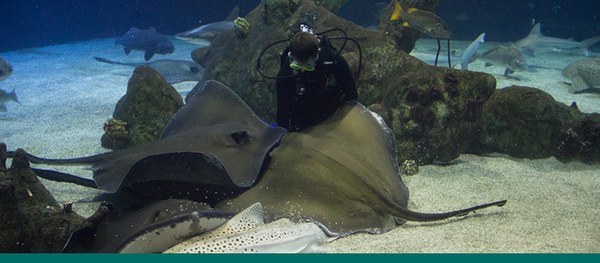Southern stingrays
Adapted for life on the ocean floor

The Aquarium houses southern stingrays in the Shark Tank and the Shallows and Shores exhibit (the larger females are in the Shark Tank and the smaller males are in the Shallows and Shores—the Aquarium keeps them separated to avoid surplus stingray pups).
Southern stingrays are nocturnal predators, but ABQ BioPark Shark Tank divers hand feed these sea-dwelling creatures at about 2 p.m. each day.
Divers have to be quick during feedings because the stingrays are on top of it (literally) when dinner time rolls around (you’ll often see them pile up around divers, ready to get their share). Sometimes a diver has to nudge an overly pushy ray away by the snout.
The southern stingray is adapted for life on the sea bed—their flat, diamond-shaped bodies are more angular than other rays, and they also use their wing-like pectoral fins to propel themselves across the ocean bottom.
Bottom feeders, they have mouths on their belly. Stingrays “pulse” by pushing water out and bringing food into two rolling plates that rotate like a wheel to crush food—that’s why it’s important that divers wear special protective gloves when feeding the stingrays.
